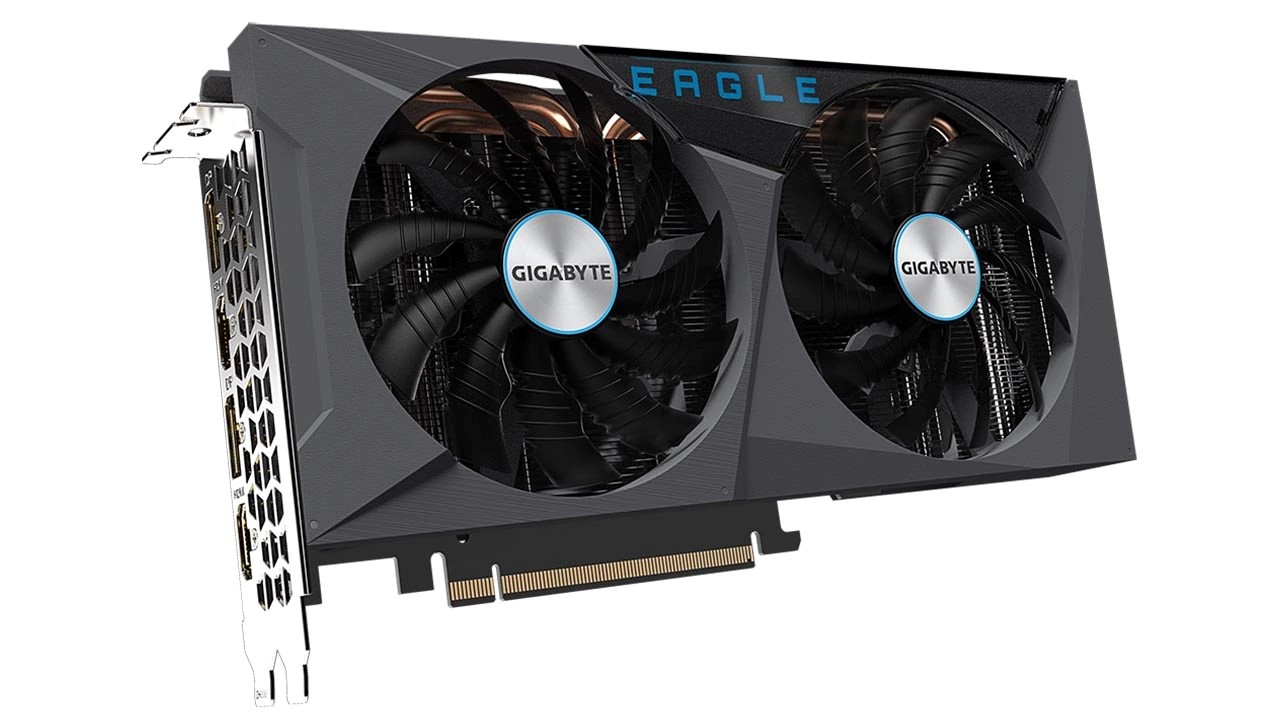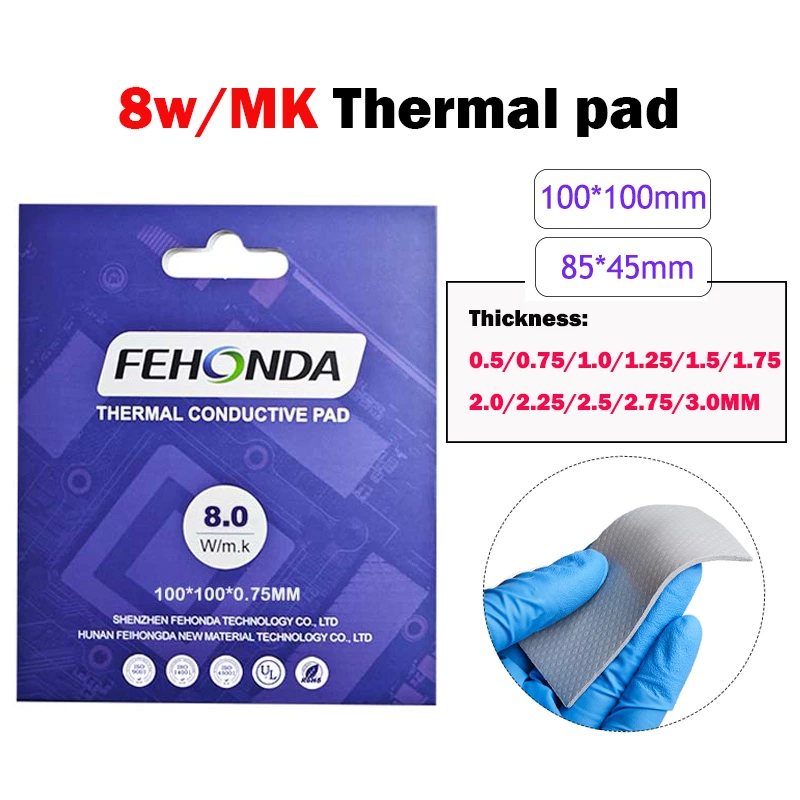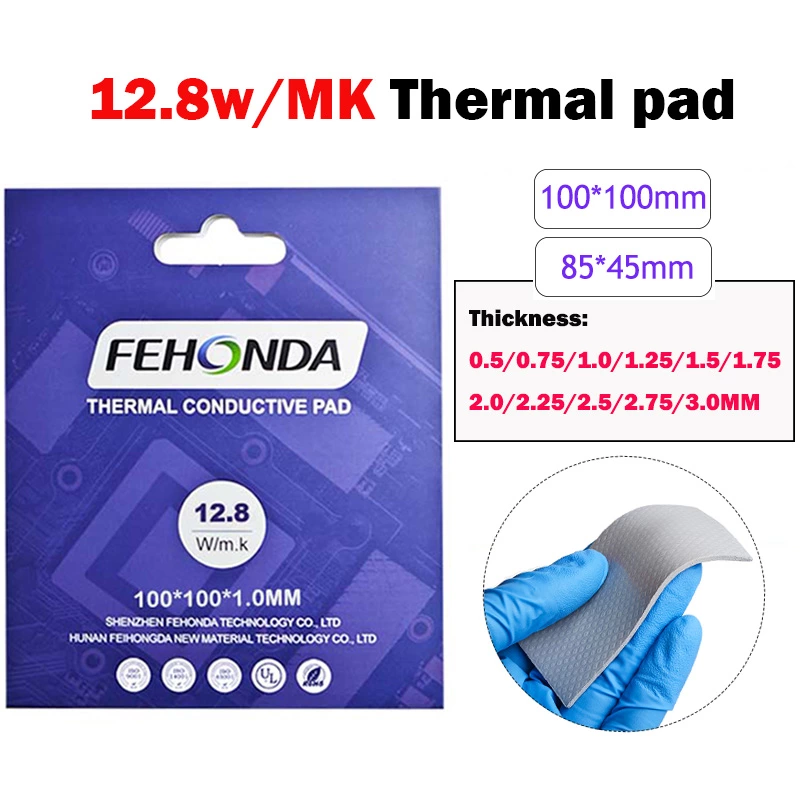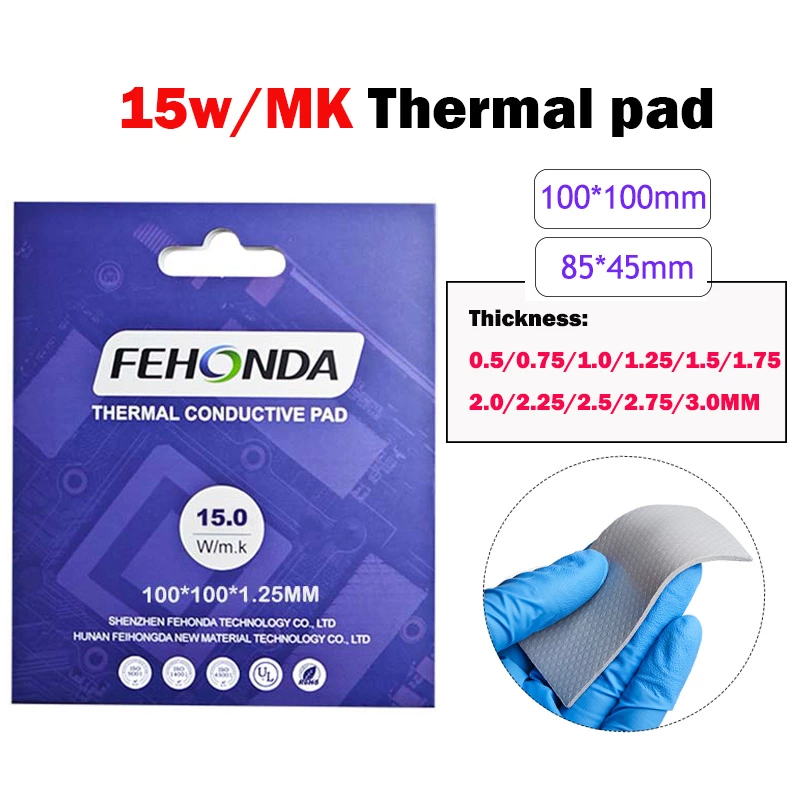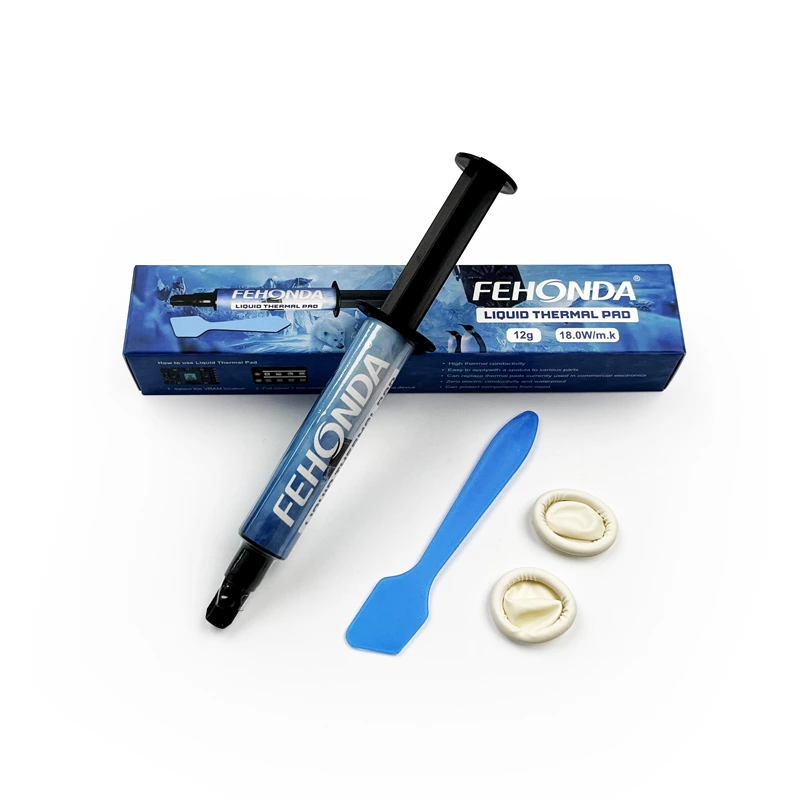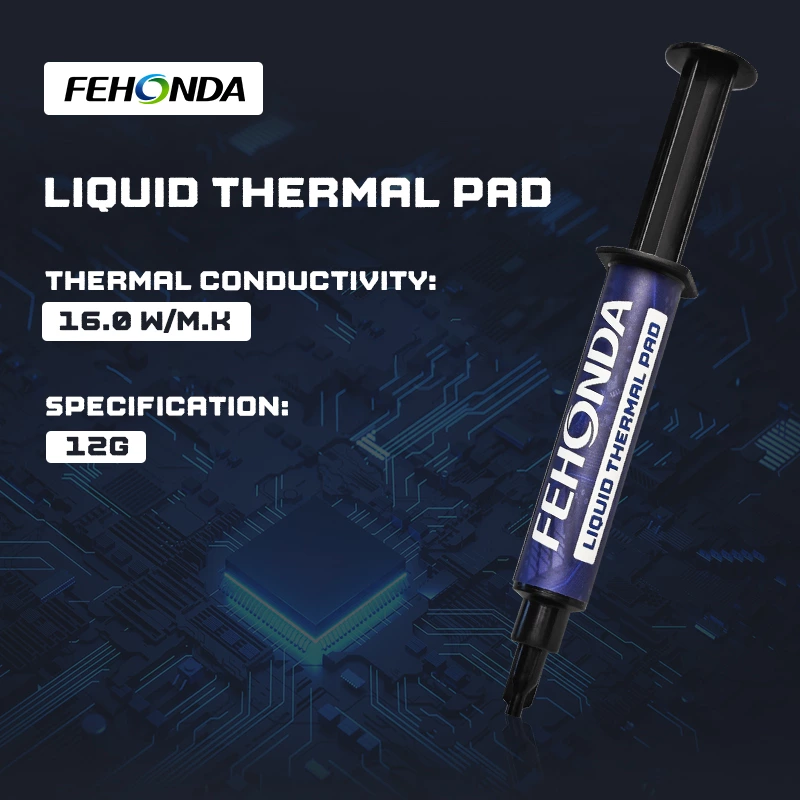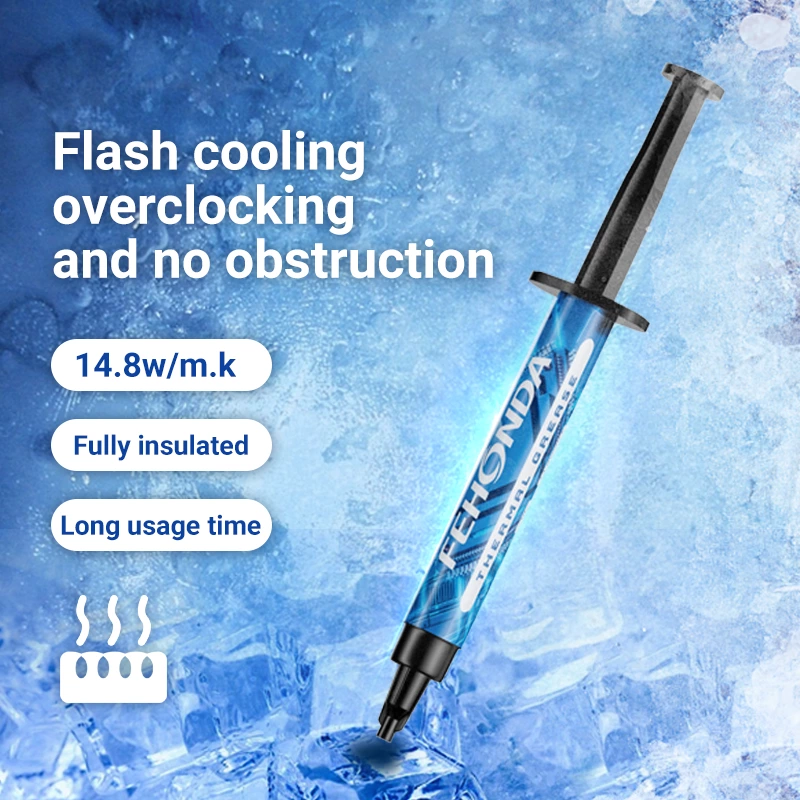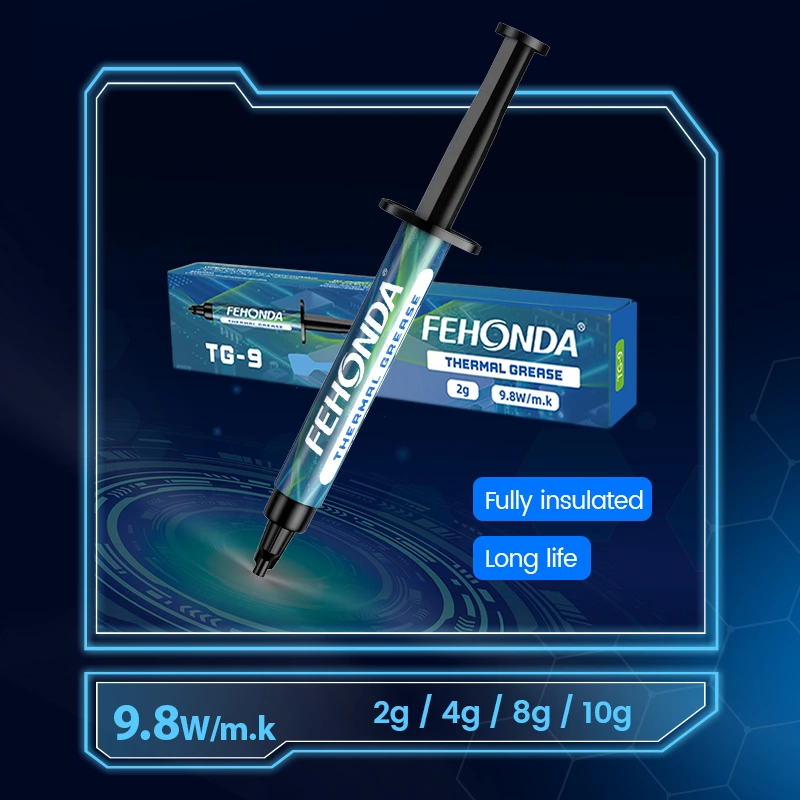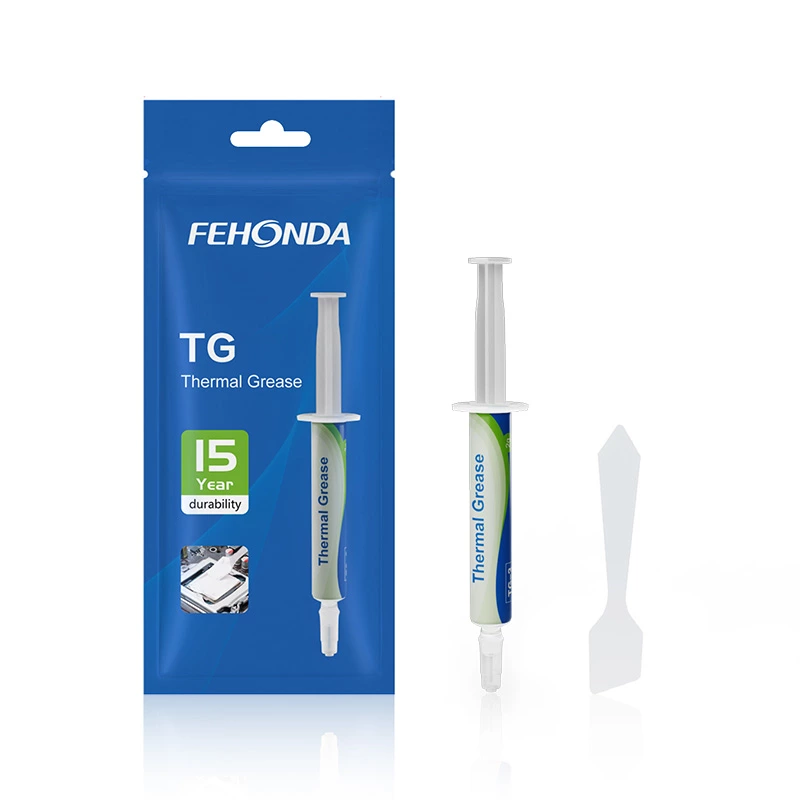Why Correct Thermal Pads are Crucial for Your GIGABYTE RTX 3060 Ti EAGLE OC
Thermal pads are essential for conducting heat away from critical components on your graphics card, such as the VRAM (Video Random Access Memory) chips and VRMs (Voltage Regulator Modules), to the heatsink. Proper heat dissipation prevents these components from overheating, which can lead to performance degradation and potential damage.
Using old, worn-out, or improperly sized thermal pads can result in:
- Increased Operating Temperatures: Leading to thermal throttling, where the GPU reduces its clock speeds to prevent overheating, thus lowering performance.
- System Instability: Overheating can cause game crashes, screen artifacts, or even system shutdowns.
- Reduced GPU Lifespan: Prolonged exposure to high temperatures can shorten the operational life of your graphics card's components.
Replacing thermal pads with new, high-quality ones of the correct thickness is a key maintenance step to keep your GIGABYTE RTX 3060 Ti EAGLE OC 8G running optimally.
Required Thermal Pad Sheets for GIGABYTE GeForce RTX 3060 Ti EAGLE OC 8G
For the GIGABYTE GeForce RTX 3060 Ti EAGLE OC 8G, you will need thermal pad sheets of two primary thicknesses: 1mm and 1.5mm. Unlike some guides that list pre-cut dimensions, this guide specifies the sheet sizes from which you will need to custom-cut your pads.
Required Sheet Sizes and Applications:
- For VRAMs and VRMs: You will need one (1) sheet of 85mm x 45mm x 1mm thermal pad.
- Individual pads for all VRAM modules and some VRM components will need to be carefully measured and cut from this 1mm thick sheet.
- For Pads on the side (other VRMs/components): You will need one (1) sheet of 85mm x 45mm x 1.5mm thermal pad.
- Pads for the remaining components typically found on the side of the PCB will need to be measured and cut from this 1.5mm thick sheet.

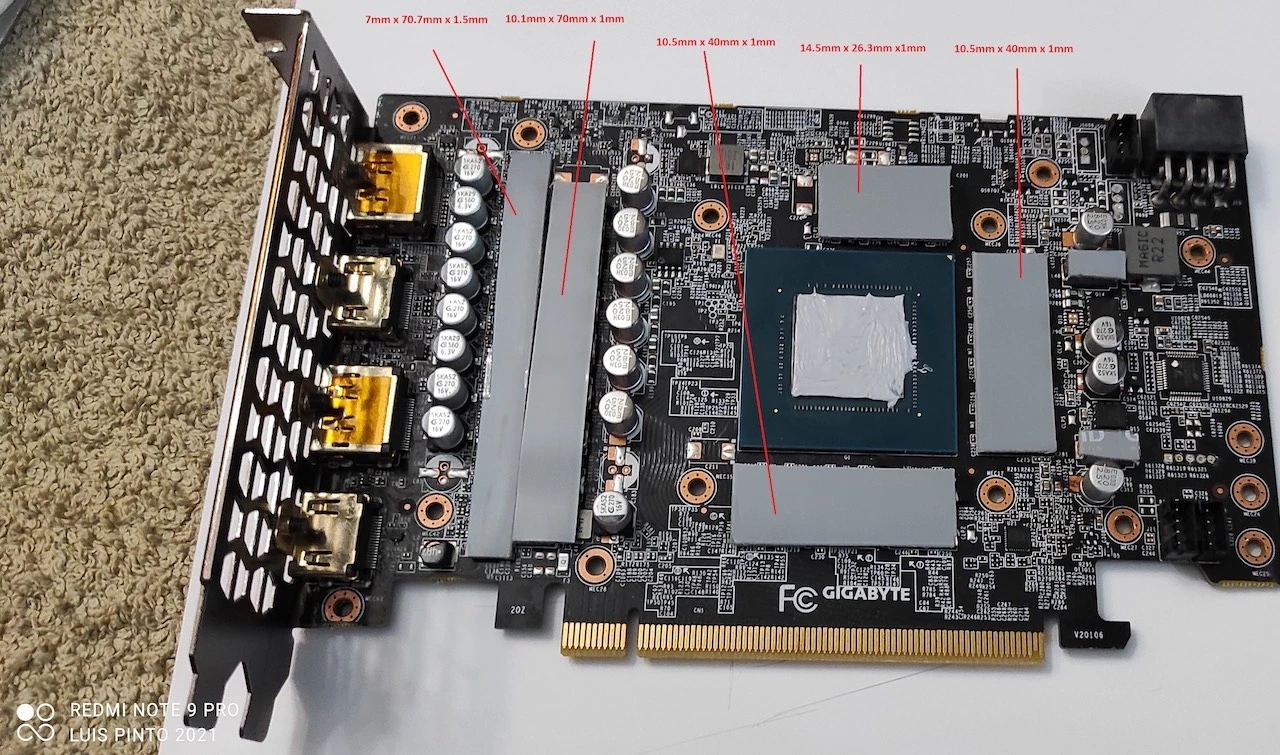
Important Note on Thicknesses: The information provided specifies needing sheets of 1mm and 1.5mm. You will need at least one pack of 85x45mm for each of these required thicknesses. Accurate measurement of the components on your specific card during disassembly is crucial for cutting the individual pads correctly.
Why Choose Fehonda Thermal Pads?
When undertaking a thermal pad replacement, the quality of the pads is just as important as the correct thickness. Fehonda thermal pads are a recommended option due to several benefits:
- Premium Quality: Fehonda utilizes high-grade materials in their thermal pads, ensuring excellent thermal conductivity and durability for long-lasting cooling performance.
- Enhanced Cooling: Specifically engineered to optimize heat transfer, these pads help reduce the operating temperatures of critical GPU components.
- Expertise: Fehonda specializes in thermal interface materials, offering products designed with an understanding of modern electronics' cooling needs.
- Versatile Solutions: Providing thermal pads in sheet form, like the 85x45mm size, allows for the flexibility to custom-cut pads for a wide variety of GPUs and specific component sizes.
Tips for Replacing Your GPU Thermal Pads (Custom Cutting Required)
Replacing GPU thermal pads, especially when custom cutting is involved, requires precision and care. If you are not experienced with GPU disassembly, consider seeking professional assistance or watching detailed guides for your specific GIGABYTE RTX 3060 Ti EAGLE OC model.
- Preparation: Gather your tools: new Fehonda thermal pad sheets (85x45x1mm and 85x45x1.5mm), a precision screwdriver set, a sharp craft knife or precision scissors for cutting pads, a ruler or calipers for measuring, non-metallic prying tools (optional), high-purity isopropyl alcohol (90%+), and lint-free cloths. An anti-static wrist strap is crucial.
- Disassembly & Measurement: Carefully disassemble your graphics card to expose the VRAM, VRMs, and other components requiring thermal pads. Crucially, before removing the old pads (if possible and intact), measure their length and width accurately. If they are too degraded, measure the components themselves. Note which components require 1mm thickness and which require 1.5mm.
- Remove Old Pads & Clean: Gently remove all old thermal pad material. Thoroughly clean the surfaces of the components and the heatsink contact points with isopropyl alcohol to remove any residue. Ensure surfaces are completely dry.
- Cut New Pads: Based on your measurements, carefully and precisely cut the new Fehonda thermal pads from your 1mm and 1.5mm sheets. Aim for a clean, straight cut. The pads should cover the entire surface of the component without significant overhang.
- Apply New Pads: Remove the protective film from one side of a newly cut pad, apply it to the corresponding component, then remove the film from the other side just before reattaching the heatsink.
- Reapply GPU Thermal Paste: Since the heatsink is removed, clean the old thermal paste from the GPU die and apply a fresh layer of new, high-quality thermal paste.
- Reassembly: Carefully reassemble your graphics card, ensuring even pressure when reattaching the heatsink. Do not overtighten screws.
- Testing: Install the card and monitor temperatures under load to verify the success of the replacement.
Disclaimer: Disassembling your graphics card can void its warranty and carries a risk of damage. Proceed with caution and at your own risk.
Where to Purchase Fehonda Thermal Pads
For reliable, high-quality Fehonda thermal pad sheets suitable for your GIGABYTE GeForce RTX 3060 Ti EAGLE OC 8G, online marketplaces like AliExpress are a common source.
FEHONDA Thermal Pad ===>>Click Here to Go to AliExpress and Buy Directly Now
Ensure you purchase both the 85x45x1mm and 85x45x1.5mm sheets from reputable sellers.
Conclusion: Optimize Your GIGABYTE RTX 3060 Ti EAGLE OC's Cooling
Proper thermal pad replacement is key to maintaining the performance and health of your GIGABYTE GeForce RTX 3060 Ti EAGLE OC 8G. By using high-quality Fehonda thermal pad sheets (1mm for VRAMs/VRMs and 1.5mm for side pads) and carefully measuring and cutting the individual pieces, you can significantly improve your GPU's thermal performance, leading to a cooler, quieter, and more reliable experience.
